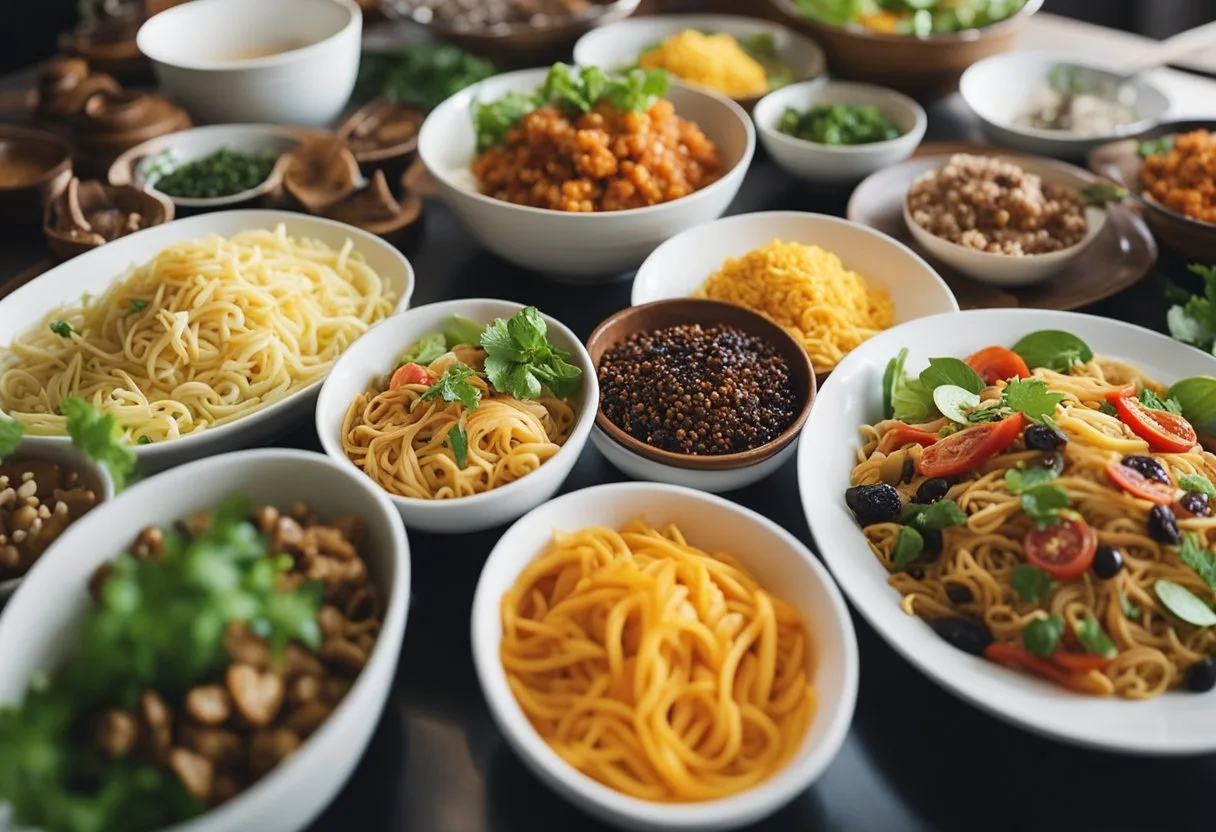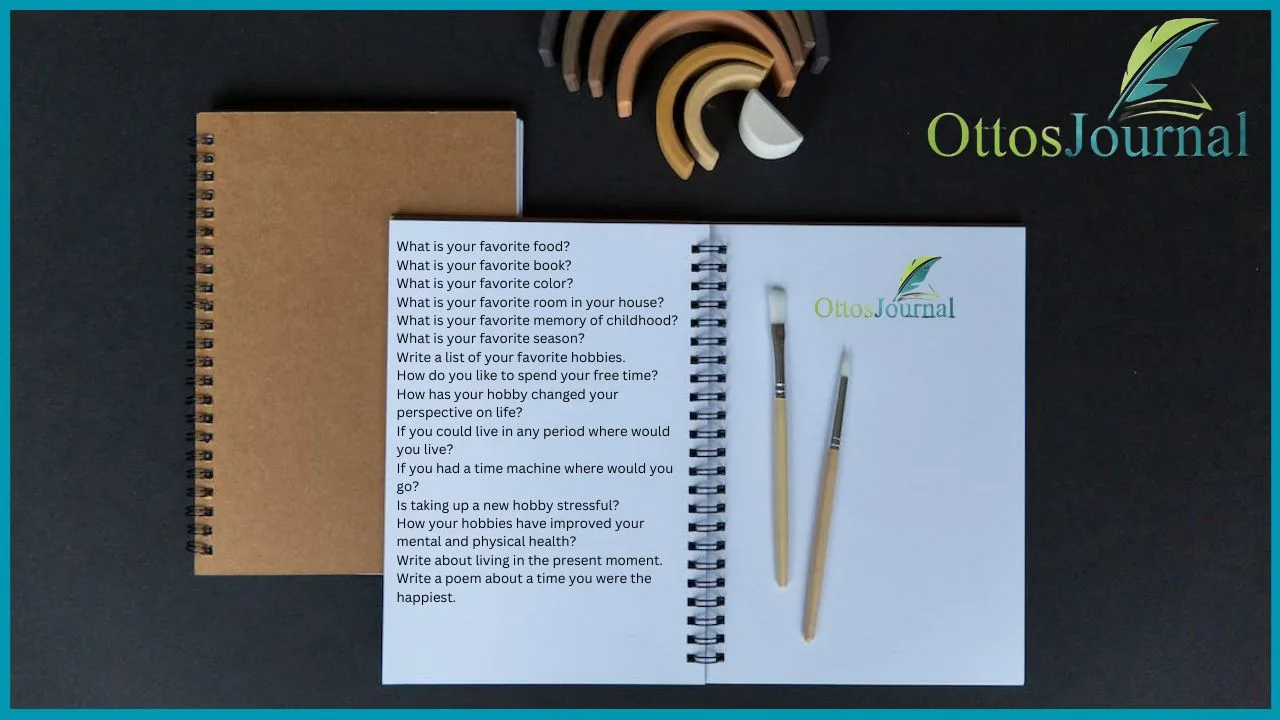Gratitude journaling is a popular way to express emotions and improve mental health, happiness and sleep quality. It involves writing down things one is grateful for on a daily basis. A gratitude journal can help cultivate an attitude of gratitude, which can lead to positive changes in one’s life. In this blog post, I will share with you 75 gratitude journal examples to help inspire your daily reflections.
Examples of gratitude journal entries can be helpful for those who are new to the practice or those who are looking for inspiration. Examples may include things like expressing gratitude for loved ones, good health, or a beautiful sunset. Writing down specific details about what one is grateful for can help to deepen the practice and make it more meaningful.
The Science of Gratitude
Research has shown that practicing gratitude can have a significant impact on one’s overall well-being. Positive emotions, such as gratitude, have been linked to increased happiness, better physical health, and improved relationships. Gratitude journaling is a way to cultivate these positive emotions and reap the benefits.
Studies have also shown that practicing gratitude can change the way the brain processes information. It can increase activity in the prefrontal cortex, which is associated with decision-making, social behavior, and attention. This increased activity can lead to a more positive outlook on life and better coping skills.
Benefits of Gratitude Journaling
There are numerous benefits to practicing gratitude journaling. It can lead to increased happiness, improved relationships, better sleep, and reduced symptoms of depression and anxiety. It can also lead to a more positive outlook on life and increased resilience in the face of adversity.
Gratitude journaling can also improve physical health. Studies have shown that it can lead to reduced inflammation, improved heart health, and better immune function. It can also lead to better self-care practices, such as exercise and healthy eating.
Gratitude journaling is a simple yet powerful practice that can have numerous benefits for mental and physical health. By taking just a few minutes each day to focus on the things one is grateful for, individuals can cultivate positive emotions and improve their overall well-being.
Getting Started with a Gratitude Journal

Starting a gratitude journal can be a powerful tool for improving one’s mental health and overall well-being. Here are a few tips to help you get started.
Choosing Your Journal
The first step in starting a gratitude journal is to choose the right journal. It’s important to choose a journal that you like and that you will enjoy writing in regularly. Consider the size, design, and paper quality of the journal.
Some people prefer a small journal that can be easily carried around, while others prefer a larger journal with plenty of space to write. Ultimately, the journal you choose should be a reflection of your personal style and preferences.
Setting a Schedule for Writing
Once you have chosen your journal, it’s important to set a schedule for writing. Developing a regular writing habit is key to making gratitude journaling a regular part of your routine. Consider setting aside a specific time each day to write in your journal, such as first thing in the morning or before bed at night. This will help you to establish a consistent practice and make gratitude journaling a daily habit.
Creating a Habit
Finally, it’s important to commit to your gratitude practice and make it a regular part of your life. This means making a commitment to write in your journal regularly, even when you don’t feel like it. It’s important to remember that the benefits of gratitude journaling come from the act of writing, not just from the content of what you write. Over time, the act of writing in your gratitude journal will become a habit, and you will begin to see the positive effects on your mental health and overall well-being.
Gratitude journal examples

Here are 75 examples of gratitude journal entries:
- The warmth of the sun on my face during a morning walk.
- A delicious home-cooked meal shared with family.
- The comfort of my bed after a long day.
- A thoughtful message from a friend.
- The beauty of a sunset or sunrise.
- A good book that captivated my imagination.
- The smell of fresh coffee in the morning.
- A compliment from a coworker on a job well done.
- The convenience of modern technology in my daily life.
- The sound of laughter from a loved one.
- A relaxing evening with my favorite music.
- The opportunity to learn something new.
- A peaceful moment of meditation or prayer.
- The excitement of planning a future trip.
- The feeling of clean sheets on my bed.
- A funny joke that made me laugh out loud.
- The taste of my favorite dessert.
- A helping hand from a stranger.
- The joy of watching my pet play.
- A successful workout session.
- The ability to provide for my basic needs.
- A moment of clarity on a difficult problem.
- The freedom to express my thoughts and feelings.
- A random act of kindness I witnessed.
- The privilege of a good education.
- The beauty of a garden in bloom.
- A quiet moment to enjoy my morning routine.
- The satisfaction of completing a challenging task.
- The support I receive from my community.
- The luxury of a hot shower.
- A child’s innocent smile and laughter.
- The pleasure of a leisurely walk in nature.
- The security of a stable job.
- A surprise visit from an old friend.
- The comfort of a favorite sweater on a chilly day.
- The joy of discovering a new hobby.
- The relief of good health after feeling ill.
- The inspiration gained from a motivational quote.
- The pleasure of a lazy Sunday morning.
- The excitement of receiving a package in the mail.
- The tranquility of a quiet evening at home.
- The beauty of a piece of art that moved me.
- The satisfaction of helping someone in need.
- The comfort of a long conversation with a close friend.
- The thrill of achieving a personal goal.
- The taste of fresh fruit from the market.
- The convenience of public transportation.
- The delight of a surprise compliment.
- The pleasure of a well-timed vacation.
- The warmth of a cozy blanket on a cold night.
- The fun of a game night with friends.
- The enjoyment of a well-made movie or TV show.
- The luxury of sleeping in on a weekend.
- The beauty of the first snowfall of the season.
- The comfort found in a familiar routine.
- The excitement of trying out a new restaurant.
- The satisfaction of a clean and organized living space.
- The joy of reconnecting with an old friend.
- The relief when a loved one recovers from an ailment.
- The comfort of having a supportive partner.
- The pride in a child’s accomplishments.
- The pleasure of a well-tended garden.
- The safety and security of a home.
- The joy of a successful DIY project.
- The comfort of a pet’s unconditional love.
- The excitement of learning a new skill.
- The satisfaction of a productive day.
- The tranquility of a quiet morning.
- The delight of watching a favorite sports team win.
- The pleasure of a warm bath.
- The comfort of knowing I’m loved and appreciated.
- The joy of holiday traditions.
- The beauty of an old, favorite song.
- The excitement of making plans for the future.
- The comfort of a heartfelt hug.
- The satisfaction of ticking off everything on my to-do list.
- The joy of a spontaneous road trip.
- The beauty of a well-crafted poem.
- The comfort of a steady rain against the window.
Journaling Techniques and Prompts

Effective Prompts for Reflection
One of the most effective ways to practice gratitude journaling is by utilizing prompts that encourage reflection. Some effective prompts for reflection include “What are three things you are grateful for today?” and “What are some challenges you faced today, and how did you overcome them?. These prompts encourage individuals to focus on the positive aspects of their day, while also recognizing the challenges they faced and how they were able to overcome them.
Structuring Your Entries
Structuring your gratitude journal entries can also be an effective way to ensure that you are consistently practicing gratitude. One popular technique is using a gratitude bullet journal, which involves creating a structured layout that includes sections for daily gratitude lists, weekly reflections, and monthly goals. This technique can help individuals stay organized and ensure that they are consistently practicing gratitude.
Embracing Creativity in Journaling
Another way to enhance gratitude journaling is by embracing creativity. This can involve incorporating art, such as drawings or collages, into your journal entries, or using creative writing techniques, such as poetry or storytelling. Embracing creativity can help make gratitude journaling a more enjoyable and fulfilling experience, while also allowing individuals to express their gratitude in unique and meaningful ways.
Utilizing effective prompts, structuring your entries, and embracing creativity can all help enhance gratitude journaling and make it a more consistent and fulfilling practice. By incorporating these techniques into their gratitude journaling routine, individuals can experience the many benefits of gratitude, including improved mental health and overall well-being.
Personalizing Your Gratitude Experience

Gratitude journaling is a personal experience that can be adapted to fit the individual’s needs and preferences. Incorporating personal elements into the gratitude journal can make it more meaningful and enjoyable. Adapting journaling to life changes can help maintain the habit and keep it relevant.
Incorporating Personal Elements
Adding personal elements to the gratitude journal can make it a unique and special experience. Some ways to incorporate personal elements include:
- Using a favorite pen or notebook
- Including pictures or drawings
- Writing in a specific location or at a specific time of day
- Incorporating personal anecdotes or stories
- Writing letters to loved ones expressing gratitude
Adapting Journaling to Life Changes
Life is constantly changing, and the gratitude journal should adapt to these changes. Some ways to adapt journaling to life changes include:
- Focusing on different aspects of daily life, such as work, relationships, or hobbies
- Adjusting the frequency of journaling to fit the individual’s schedule
- Writing about challenges or struggles as a way to gain perspective and find gratitude
- Including a variety of things to be thankful for, such as people, experiences, and possessions
Personalizing the gratitude journal and adapting it to life changes can make the experience more enjoyable and meaningful. By finding ways to incorporate personal elements and adjust to life changes, the gratitude journal can become a valuable tool for maintaining a positive perspective and finding gratitude in daily life.
The Impact of Gratitude on Relationships
Gratitude is an emotion that can have a significant impact on relationships, both personal and professional. When individuals express gratitude towards one another, it can foster feelings of appreciation and positivity, which can lead to stronger bonds and better communication. In this section, we will explore the ways in which gratitude can impact relationships.
Sharing Gratitude with Others
One way to express gratitude in a relationship is by sharing it with others. This can be done through various means, such as a verbal expression of thanks, a handwritten note, or a gratitude letter. A gratitude letter is a written expression of gratitude, often addressed to a specific person, that describes the impact that person has had on the writer’s life. By sharing gratitude in this way, individuals can strengthen their relationships with others and create a sense of mutual appreciation.
Gratitude and Professional Relationships
Gratitude can also have a significant impact on professional relationships. When individuals express gratitude towards their colleagues or superiors, it can create a positive work environment and foster a sense of teamwork. This can lead to increased job satisfaction and better overall performance. Expressing gratitude towards clients or customers can help to build a strong rapport and foster customer loyalty.
The expression of gratitude can have a significant impact on relationships, both personal and professional. By sharing gratitude with others, individuals can create stronger bonds and foster a sense of mutual appreciation.
In professional settings, expressing gratitude can lead to increased job satisfaction and better overall performance. By incorporating gratitude practices into their daily lives, individuals can improve their relationships and create a more positive outlook on life.
Digital Gratitude Journaling
In today’s digital age, gratitude journaling has become more accessible than ever before. With the rise of gratitude apps and online templates, it’s easier than ever to appreciate and record the things you’re grateful for.
Using Gratitude Apps
Gratitude apps are a great way to incorporate journaling into your daily routine. Many apps offer features such as daily reminders and prompts to help inspire you to write. Some popular gratitude apps include Grateful: A Gratitude Journal, Happier, and Reflectly.
Grateful: A Gratitude Journal allows users to customize their journal with personal photos and offers daily prompts to help inspire gratitude. Happier offers a community aspect, allowing users to share their gratitude with others and connect with like-minded individuals. Reflectly uses artificial intelligence to help users reflect on their day and offers personalized journaling prompts.
Online Templates and Resources
For those who prefer a more traditional approach to journaling, there are many online templates and resources available. These templates often offer prompts to help guide your writing and can be customized to fit your personal style.
Cake Blog offers a list of popular online gratitude journals and apps, including options for those who prefer a more minimalistic design. Krista Brown offers a free self-improvement gratitude journal with 35 prompts, templates, and ideas to get started. The Gratitude Journal offers 12 gratitude journal prompts and templates to help get you started.
Whether you prefer the convenience of a gratitude app or the traditional approach of a paper journal, there are many options available to help you incorporate gratitude journaling into your daily routine.
Overcoming Challenges in Gratitude Journaling
Dealing with Negative Emotions
Gratitude journaling can be challenging, especially when someone is going through a hard time or dealing with anxiety or depression. It can be difficult to find things to be grateful for when everything seems to be going wrong. However, it is important to remember that gratitude journaling can actually help alleviate some of these negative emotions.
One way to deal with negative emotions while journaling is to acknowledge them. It’s okay to write down things that are bothering you or causing you stress, but try to also find something positive to balance it out. For example, if you’re feeling overwhelmed at work, you could write “I’m grateful for my supportive coworkers who help me get through the day.”
Another strategy is to focus on the small things. Even if everything seems to be going wrong, there are usually still small moments of joy or beauty throughout the day. Maybe it’s a warm cup of coffee in the morning or a beautiful sunset on the way home from work. These small moments can add up and help shift your focus towards gratitude.
Maintaining Consistency
Maintaining consistency with gratitude journaling can also be a challenge. It’s easy to start off strong with a daily practice, but over time it can become difficult to keep up with. One way to combat this is to make it a non-negotiable part of your routine. Just like brushing your teeth or taking a shower, make gratitude journaling a daily habit that you don’t skip.
Another strategy is to mix it up. If you find yourself getting bored with the same prompts or format, try switching it up. Maybe one day you write a list of things you’re grateful for, and the next day you write a paragraph about a specific person or experience. This can help keep things fresh and interesting.
Finally, remember that consistency doesn’t always mean daily. If a daily practice just isn’t feasible for you, try committing to journaling once a week or a few times a week. The important thing is to make it a consistent part of your routine in whatever way works best for you.
Advancing Your Practice
Deepening Your Reflections
As you become more comfortable with your gratitude journaling practice, consider deepening your reflections to gain a deeper understanding of the things you’re grateful for. Instead of simply listing things you’re thankful for, take the time to explore why you’re grateful for them. This can help you develop a deeper sense of appreciation and gratitude, and can also help you identify patterns or themes in your life that bring you joy.
One way to deepen your reflections is to use prompts that encourage you to reflect on specific aspects of your life. For example, you might use prompts like “What was the best part of my day?” or “What have I learned from a recent challenge?” These prompts can help you focus your reflections and gain a deeper understanding of the things you’re grateful for.
Long-Term Benefits and Goals
While gratitude journaling can help you feel better in the moment, it can also have long-term benefits for your well-being and life satisfaction. Research suggests that practicing gratitude can lead to improved well-being, increased positive affect, and greater life satisfaction over time.
To maximize the long-term benefits of your gratitude journaling practice, consider setting goals for yourself. For example, you might aim to write in your gratitude journal every day for a month, or you might set a goal to identify three things you’re grateful for each day. By setting goals, you can stay motivated and focused on your practice, and you can also track your progress over time.
By deepening your reflections and setting long-term goals for your gratitude journaling practice, you can maximize the benefits of this powerful tool. Whether you’re looking to improve your well-being, increase your life satisfaction, or simply cultivate a greater sense of appreciation and gratitude, a gratitude journal can be a powerful tool to help you achieve your goals.
Frequently Asked Questions
What are some common items to include in a daily gratitude journal entry?
When writing a gratitude journal, it is important to include things that one is grateful for. This can be anything from small things like a beautiful sunset to big things like a promotion at work. It is also beneficial to include why one is grateful for these things. This helps to reinforce the positive emotions associated with gratitude.
How can students tailor a gratitude journal to their experiences?
Students can tailor their gratitude journals to their experiences by focusing on things that are important to them. For example, they may want to focus on things related to their studies or their social life. It is also important to include things that are unique to their experiences, such as a good grade on a test or a fun night out with friends.
What are the benefits of maintaining a regular gratitude journal?
Maintaining a regular gratitude journal has been shown to have many benefits, including increased happiness, reduced stress, and improved overall well-being. It can also help to improve relationships, increase empathy, and improve sleep quality.
Can you provide a basic structure or template for a gratitude journal?
While there is no one-size-fits-all template for a gratitude journal, a basic structure may include a daily entry where one lists three things they are grateful for, along with why they are grateful for those things. It can also be helpful to include a section for reflections on the day and any challenges or opportunities for growth.
How might one begin writing gratitude journal prompts?
Gratitude journal prompts can be tailored to one’s own experiences and interests. Some prompts may include “What is something you accomplished today that you are proud of?” or “What is something that made you smile today?” It is important to focus on positive experiences and to include why one is grateful for those experiences.
What steps should be followed to effectively create a gratitude journal?
To effectively create a gratitude journal, one should first set aside a specific time each day to write in the journal. It can also be helpful to find a quiet and comfortable place to write. When writing in the journal, it is important to focus on positive experiences and to include why one is grateful for those experiences. It can also be helpful to reflect on the day and any challenges or opportunities for growth.




